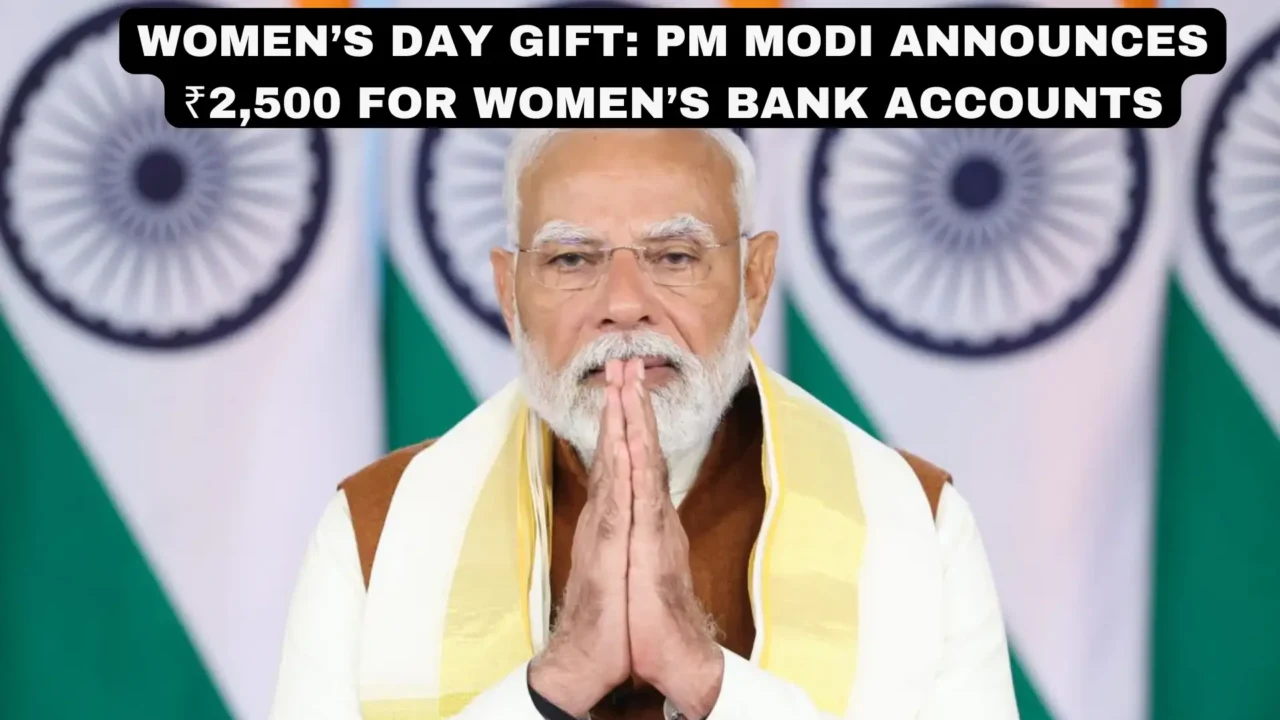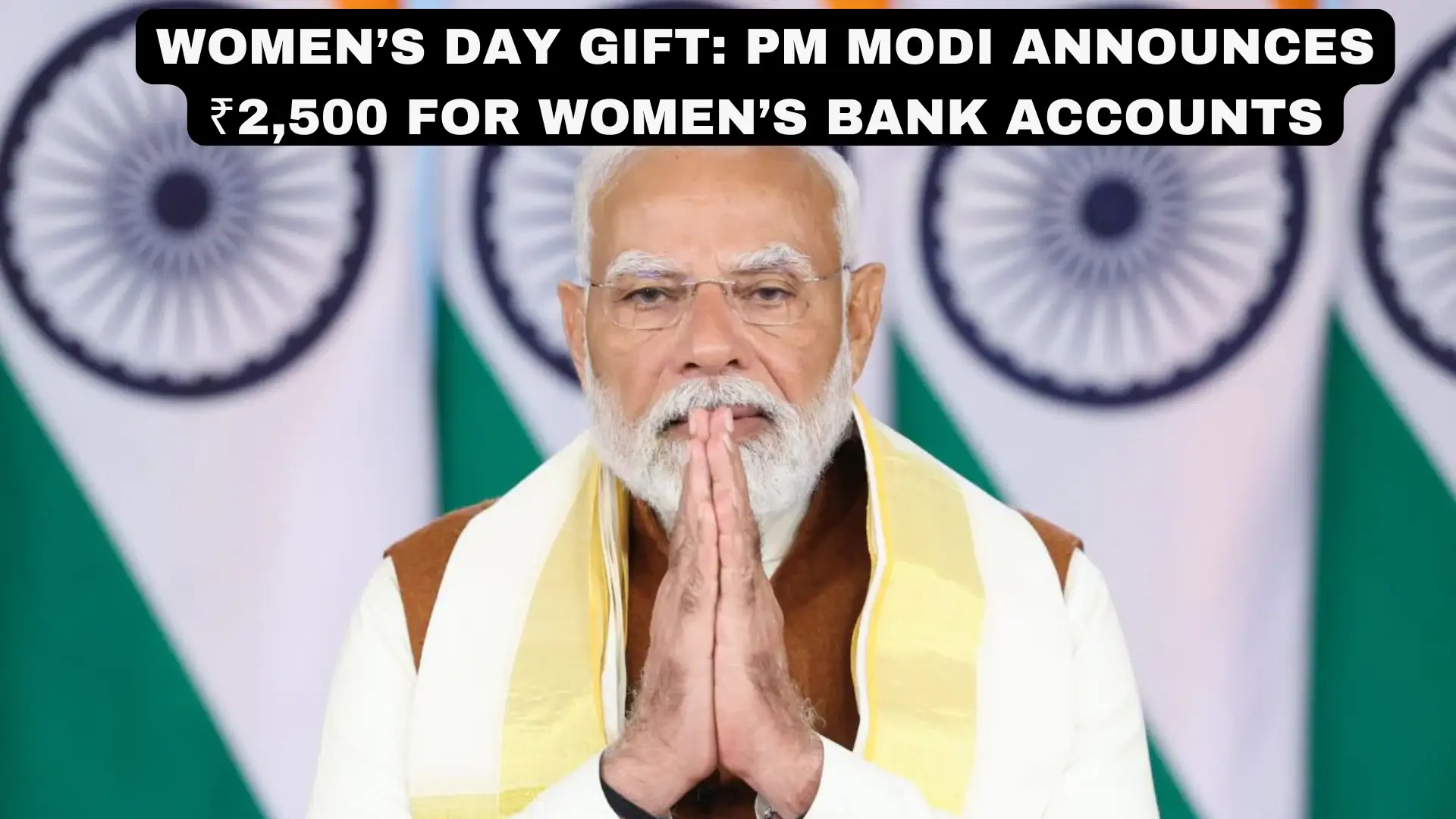On the occasion of International Women’s Day, Prime Minister Narendra Modi has announced a significant initiative aimed at empowering women across India. The scheme promises a direct transfer of ₹2,500 per month into the bank accounts of eligible women. This announcement underscores the government’s commitment to women-led development, financial inclusion, and gender equality, marking a pivotal step toward enhancing the socio-economic status of women in the country.
The initiative is part of the broader Mahila Samridhi Yojana, which aims to provide financial assistance to women from low-income households. The scheme aligns with the government’s vision of supporting women as key contributors to India’s growth story. It also complements other welfare measures such as subsidized LPG cylinders, free public transport for women in certain states, and increased allocations for women-centric programs in the Union Budget.
Women’s Day Gift

| Scheme Name | Mahila Samridhi Yojana |
| Monthly Benefit | ₹2,500 per woman |
| Eligibility Criteria | Women from low-income households; excludes government employees and taxpayers |
| Implementation Date | March 8, 2025 (International Women’s Day) |
| Mode of Transfer | Direct Benefit Transfer (DBT) to Aadhaar-linked bank accounts |
| Additional Benefits | Subsidized LPG cylinders, free public transport for women |
| Estimated Cost | Part of a larger ₹1 lakh crore allocation for women-centric schemes |
Key Objectives of the Scheme
- Financial Independence: By providing direct cash transfers, the scheme aims to empower women financially, enabling them to make independent decisions.
- Poverty Alleviation: Targeting low-income households, the initiative seeks to reduce economic disparities and improve living standards.
- Gender Equality: The program is designed to bridge gender gaps in access to financial resources and opportunities.
- Boosting Consumption: The additional income is expected to enhance household consumption and contribute to economic growth.
Significance of the Initiative
This announcement comes at a time when women’s participation in the workforce and access to financial resources remain critical challenges in India. According to recent studies, only 20% of Indian women actively participate in the labor force. Initiatives like this not only provide immediate financial relief but also have long-term implications for empowering women economically.
Impact on Women’s Empowerment
- Economic Security: The monthly allowance provides a safety net for women, especially those in vulnerable situations such as widows or single mothers.
- Enhanced Financial Inclusion: With direct transfers to bank accounts, more women are likely to engage with formal banking systems.
- Increased Household Bargaining Power: Financially empowered women can contribute more significantly to household decision-making.
- Support for Entrepreneurship: The funds can be utilized for small business ventures or skill development programs.
Comparison with Other Schemes
| Scheme Name | Monthly Benefit | Target Group | Key Features |
|---|---|---|---|
| Mahila Samridhi Yojana | ₹2,500 | Low-income women | Direct cash transfer; Aadhaar-linked accounts |
| Ladki Bahin Yojana (Maharashtra) | ₹1,500 | Women earning less than ₹2.5 lakh annually | Focus on rural areas; additional benefits for mothers |
| Mukhyamantri Maiya Samman Yojana | ₹1,000 | Women aged 23-60 | State-specific; targeted at middle-income groups |
Broader Context: Government’s Focus on Women
- Pradhan Mantri Jan Dhan Yojana: Over 29 crore bank accounts opened for women.
- Beti Bachao Beti Padhao: Focus on improving child sex ratios and promoting girl education.
- Stand-Up India: Loans provided to over 70% female entrepreneurs.
- Ujjwala Yojana: Subsidized LPG connections benefiting millions of households.
Challenges and Criticisms
- Implementation Hurdles: Ensuring that all eligible beneficiaries have Aadhaar-linked bank accounts could be a logistical challenge.
- Fiscal Sustainability: Critics have raised concerns about the long-term financial viability of such schemes given their high cost.
- Targeting Accuracy: Identifying and reaching all eligible beneficiaries requires robust data systems and monitoring mechanisms.
Future Outlook
The announcement is expected to have far-reaching implications not only for individual beneficiaries but also for India’s broader economic landscape. By empowering millions of women financially, the scheme aims to unlock their potential as active contributors to the nation’s development.
As India celebrates International Women’s Day under the theme “Rights, Equality, Empowerment,” this initiative serves as a testament to the government’s commitment to creating an equitable society where every woman has the opportunity to thrive. With sustained efforts and effective implementation, this program could set a new benchmark for gender-focused welfare policies globally.



